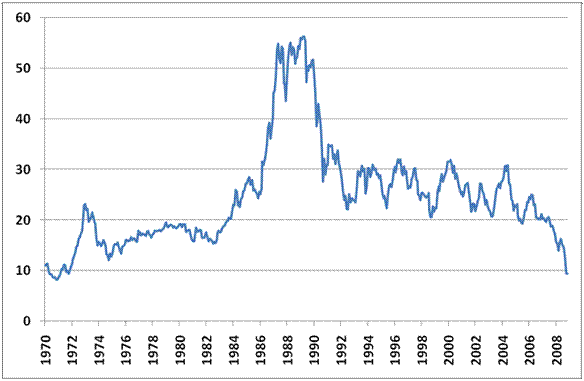An interesting aspect of the current environment is that the low levels of interest rates here, particularly on Treasury securities, have prompted concern that the U.S. might be the “next” Japan.
Over the past 20 years, the total return on Japanese stocks has been dismal, at -2.75% annually even including dividends. The concern is that somehow these poor long-term returns are attributable to the near-zero interest rate policies of the Bank of Japan, and that the U.S. appears to have embarked upon the same course.
Beyond clear structural differences between the Japanese and U.S. economy, differences in the extent of central planning, savings rates, consumption patterns, dependence on export-driven growth, and other factors, the simple response is that the U.S. market has already experienced in 10 years what the Japanese market has experienced in 20: a massive retreat from hypervaluation to what is now fair and even attractive valuation. The U.S. is not the next Japan. From a stock market perspective, it has already been Japan for the past decade, as the price/peak-earnings multiple of the S&P 500 has plunged from a high of 34 to a recent trough of about 9.

Read the complete commentary
Over the past 20 years, the total return on Japanese stocks has been dismal, at -2.75% annually even including dividends. The concern is that somehow these poor long-term returns are attributable to the near-zero interest rate policies of the Bank of Japan, and that the U.S. appears to have embarked upon the same course.
Beyond clear structural differences between the Japanese and U.S. economy, differences in the extent of central planning, savings rates, consumption patterns, dependence on export-driven growth, and other factors, the simple response is that the U.S. market has already experienced in 10 years what the Japanese market has experienced in 20: a massive retreat from hypervaluation to what is now fair and even attractive valuation. The U.S. is not the next Japan. From a stock market perspective, it has already been Japan for the past decade, as the price/peak-earnings multiple of the S&P 500 has plunged from a high of 34 to a recent trough of about 9.

Read the complete commentary